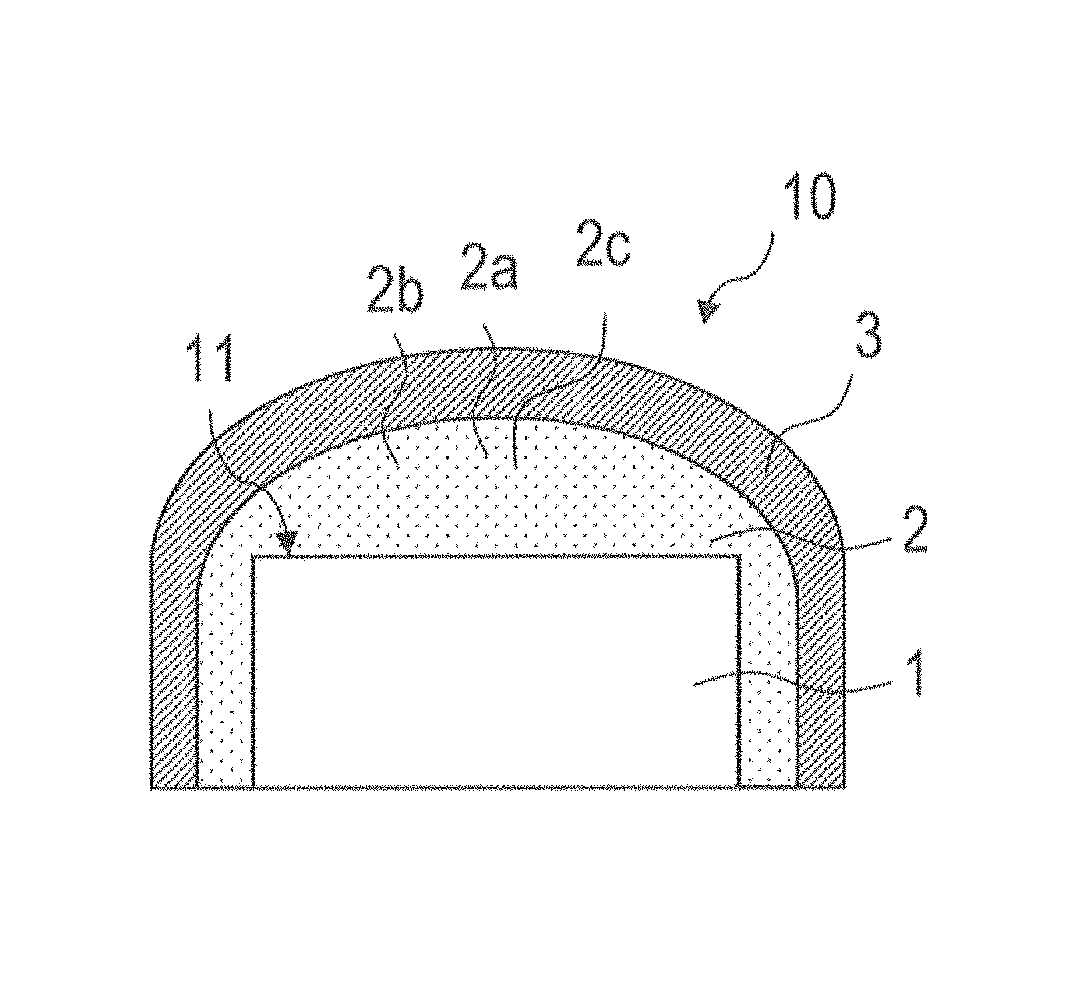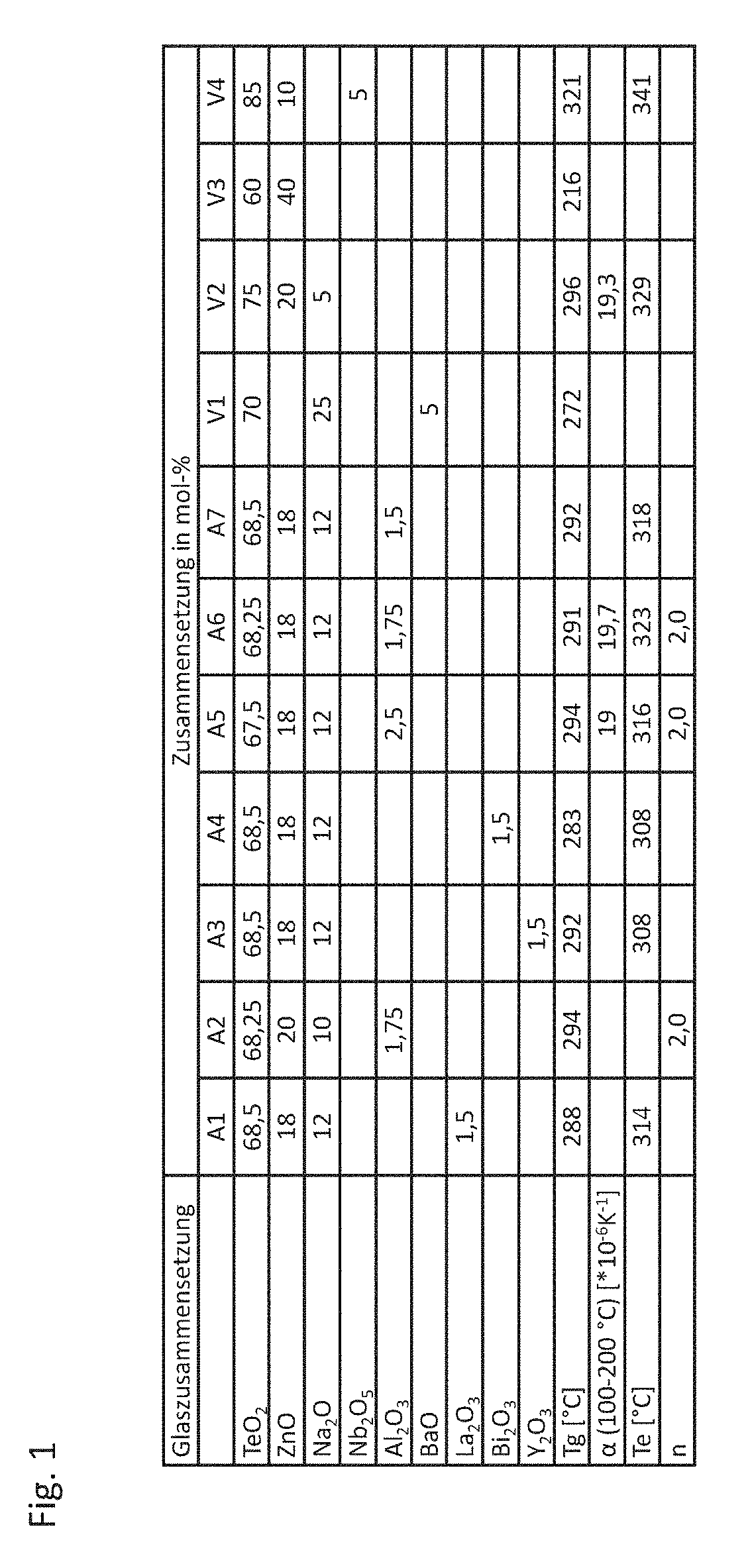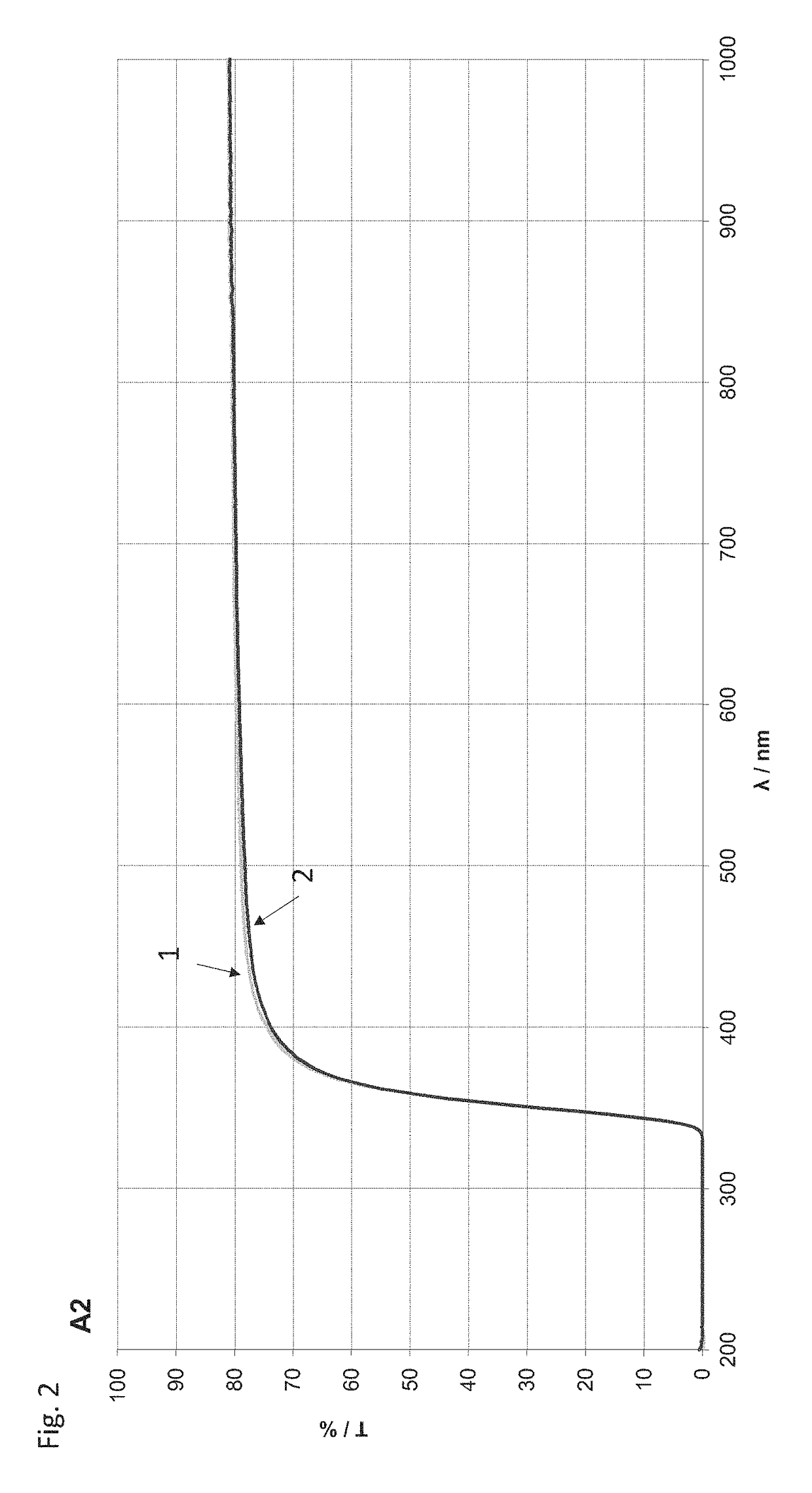Conversion element, component and process for producing a component
a technology of conversion elements and components, applied in the direction of chemistry apparatus and processes, semiconductor devices, and light-emitting compositions, to achieve the effects of reducing the number of components
- Summary
- Abstract
- Description
- Claims
- Application Information
AI Technical Summary
Benefits of technology
Problems solved by technology
Method used
Image
Examples
Embodiment Construction
[0094]FIG. 1 shows embodiments A1 to A7 of the matrix material in tabular form. The table also shows comparative examples V1 to V4 of conventional matrix materials. The values stated in the table indicate a maximum error of 5%. No phosphor is embedded in this matrix material. The matrix material of the embodiments A1 to A7 comprises tellurium oxide, in particular tellurium oxide TeO2. The proportion of tellurium oxide in A1 to A7 equals between 67 mole % and 69 mole %. In particular, the proportion of tellurium oxide equals between 67.5 mole % and 68.5 mole % inclusively.
[0095]The matrix material further comprises R1O as zinc oxide. The proportion of zinc oxide equals between 18 mole % and 20 mole % inclusively.
[0096]The matrix material further comprises M12O in the form of disodium oxide. The proportion of disodium oxide in the matrix material equals between 10 mole % and 12 mole % inclusively.
[0097]The matrix material further comprises an oxide of a trivalent metal, such as, for e...
PUM
| Property | Measurement | Unit |
|---|---|---|
| dilatometric softening temperature | aaaaa | aaaaa |
| dilatometric softening temperature | aaaaa | aaaaa |
| wavelength range | aaaaa | aaaaa |
Abstract
Description
Claims
Application Information
 Login to View More
Login to View More - R&D
- Intellectual Property
- Life Sciences
- Materials
- Tech Scout
- Unparalleled Data Quality
- Higher Quality Content
- 60% Fewer Hallucinations
Browse by: Latest US Patents, China's latest patents, Technical Efficacy Thesaurus, Application Domain, Technology Topic, Popular Technical Reports.
© 2025 PatSnap. All rights reserved.Legal|Privacy policy|Modern Slavery Act Transparency Statement|Sitemap|About US| Contact US: help@patsnap.com



